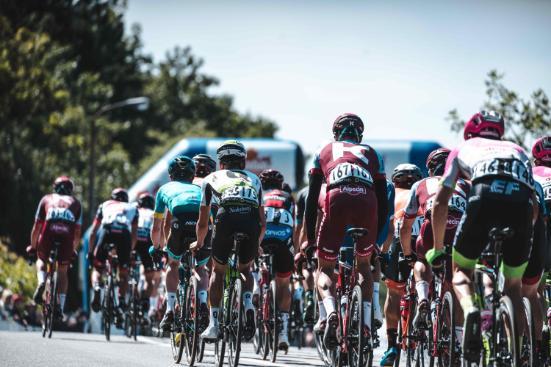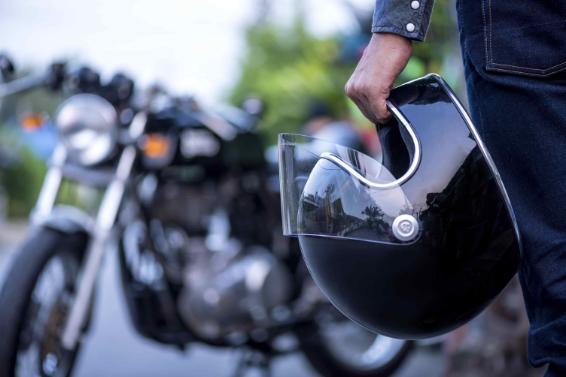Summary
Do helmets effectively prevent Traumatic Brain Injuries and concussions? How can we make sure they are tested under realistic impact scenarios? Every year, more than 10 million people suffer Traumatic Brain Injury caused by physical activity and sport. The HEADS group, led by UCD, has sought to improve helmet designs by advancing our understanding of head injury and how it should best be prevented. A key challenge was to ensure that helmet testing accurately represented real-world impact scenarios, and that so-called artificial “headforms” would reliably replicate the behaviour of the human head.
The group’s findings have directly influenced new European standards for bicycle, motorbike and equestrian helmets. These standards will ensure future products and helmet designs provide better head protection, reducing rates of Traumatic Brain Injury and concussion around the world.
Research description
Researchers have previously shown that “oblique impacts”, which occur when a rider falls at an angle to the ground, are more dangerous for the brain than head-on “linear impacts”. This is because the brain is especially sensitive to so-called shear forces, which result from rotational acceleration. From this perspective, the interaction between the head and a helmet is of primary importance when protecting the brain.
 Dr Trotta, in collaboration with Dr Ní Annaidh (UCD) and Professor Ivens (KU Leuven), decided to study the head-helmet interface and to compare it with the interaction that occurs between a helmet and the artificial “headforms” that are currently used in standards testing.
Dr Trotta, in collaboration with Dr Ní Annaidh (UCD) and Professor Ivens (KU Leuven), decided to study the head-helmet interface and to compare it with the interaction that occurs between a helmet and the artificial “headforms” that are currently used in standards testing.
At the time of the research, Dr Trotta was a Marie-Curie Early Stage Researcher with the HEADS (Head protection: a European training network for Advanced Design in Safety) group. She explains: “To study the interaction between head and helmet, we needed to reproduce the impact forces and movements of the helmet on the head during an impact and consider the effects of different people’s hair and scalp on this interaction.”
To do so, the group pressed a circular sample of material (representative of helmet materials) on cadaver human heads. They then applied horizontal displacements to the sample, simulating the relative motion between helmet and head. The same experiment was also performed using artificial headforms. By comparing these results, the group could determine if headforms behave in a way that accurately replicates the behaviour of a real head.
Through these experiments the team identified certain sliding properties of the human head-helmet interface, confirming that current headforms do not replicate the behaviour of the human head and, therefore, current certification standards do not represent realistic impact conditions.
Research impact
Traumatic Brain Injury is the leading cause of death for young adults (under 45 years old) worldwide. Every year, more than 10 million people suffer Traumatic Brain Injury caused by physical activity and sport. More realistic standards tests will improve helmet designs and reduce the severity of injury and rates of concussion.
Recent efforts to improve helmet test standards have focused on reproducing realistic impact conditions that include the effects of rotational acceleration. However, less importance has been given to developing headforms that more accurately replicate the behaviour of the human head. The proposed introduction of oblique impact testing makes the interface between the head and helmet fundamentally important.
The collaboration between Dr Trotta, Dr Ní Annaidh and Professor Ivens was pivotal in defining the head-helmet interaction properties. The group found that the headform-helmet interface is substantially different from the head-helmet interface, which was previously unknown. However, the most significant findings were specific properties of the interaction between helmet and head. These findings were used to develop a new artificial headform for helmet testing and to perform more accurate computer simulations of head impacts.
 These findings have directly informed the work of CEN/TC158 (Working Group 11), which is charged with formulating new European standards for bicycle, motorbike and equestrian helmets. This pan-European group, made up of international experts in the field, including HEADS members, has worked for several years to develop more realistic testing methods for helmets, including finding a way of testing oblique impacts, mimicking how a rider normally falls at an acute angle to the ground.
These findings have directly informed the work of CEN/TC158 (Working Group 11), which is charged with formulating new European standards for bicycle, motorbike and equestrian helmets. This pan-European group, made up of international experts in the field, including HEADS members, has worked for several years to develop more realistic testing methods for helmets, including finding a way of testing oblique impacts, mimicking how a rider normally falls at an acute angle to the ground.
Key experimental results were presented by Professor Ivens to the working group in July 2017. The committee recognised the value of these results and have since agreed how to use them to develop a new artificial headform. While the impact conditions (speeds and impact angles) will be different for these three standards, the artificial headform will be the same. The bicycle helmet standard is pending final adoption in 2020. The equestrian and motorbike standards will be submitted in the next year.
These new standards will directly affect all helmet manufacturers in the European market, obliging them to ensure that their products and helmet designs pass the safety standards. In turn, this will provide better head protection and lead to a reduction in incidence rates of Traumatic Brain Injuries and concussion.
There are significant differences in the mechanisms of injury and injury incidence rates for people of different ages, sex, and levels of riding ability. Future research will more fully address these nuanced differences. In the meantime, we can be pleased that changes in the helmet certification standards will lead to improved welfare for cyclists, motorcyclists and others participating in sports. Our brains make us what we are, and we need to protect them!